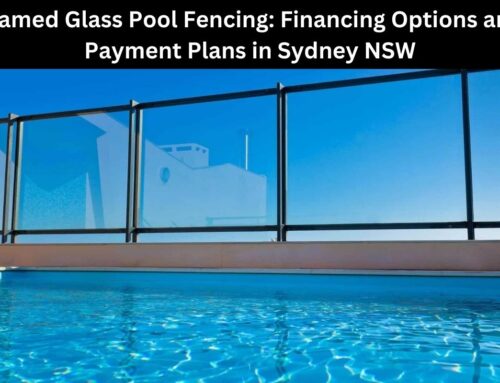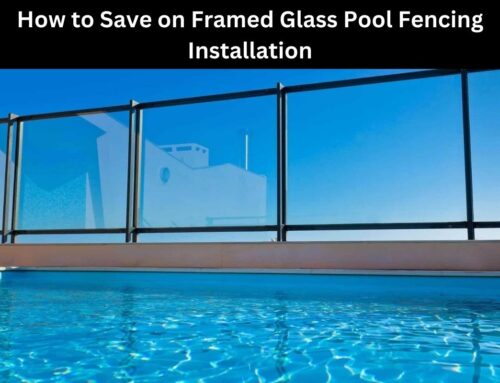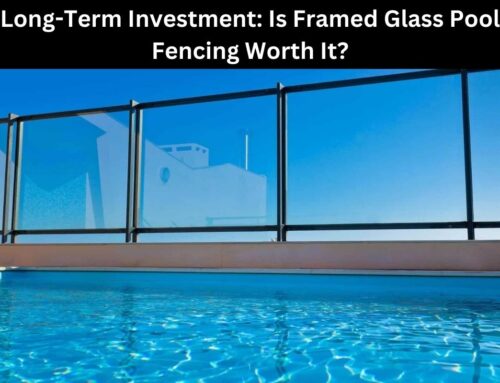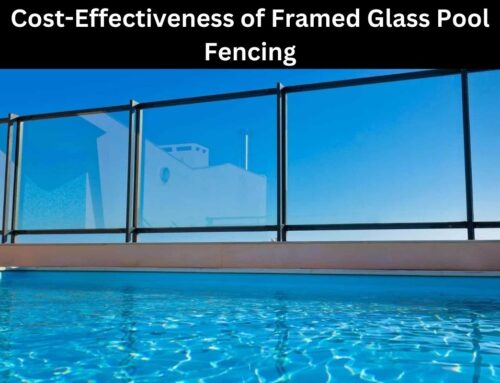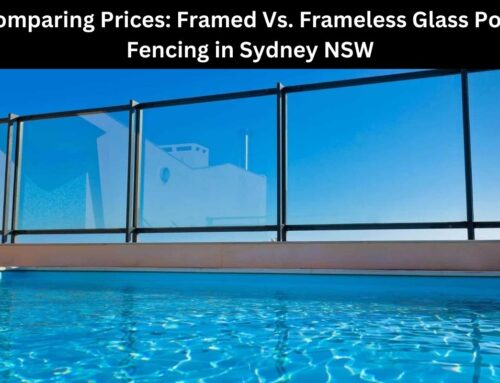Table of Contents
Framed glass pool fencing boasts a bevy of safety features that ensure the protection and well-being of individuals around swimming pools. These key safety features revolve around the sturdy frame and construction, self-closing and self-latching gates, height and gap requirements, non-climbable design, and the use of tempered safety glass.
With an emphasis on safety, these features offer peace of mind to pool owners and provide a reliable barrier against potential accidents. The sturdy frame and construction of the fencing create a robust barrier, while the self-closing and self-latching gates guarantee that the pool area remains secure at all times.
Adhering to specific height and gap requirements further enhance the safety standards, preventing unauthorized access. Additionally, the non-climbable design of the fencing acts as a deterrent for children and pets.
Finally, the use of tempered safety glass ensures that the fencing is durable and resistant to breakage, reducing the risk of injury. Understanding these key safety features is essential for those seeking to enhance the safety of their pool areas while maintaining an aesthetically pleasing environment.
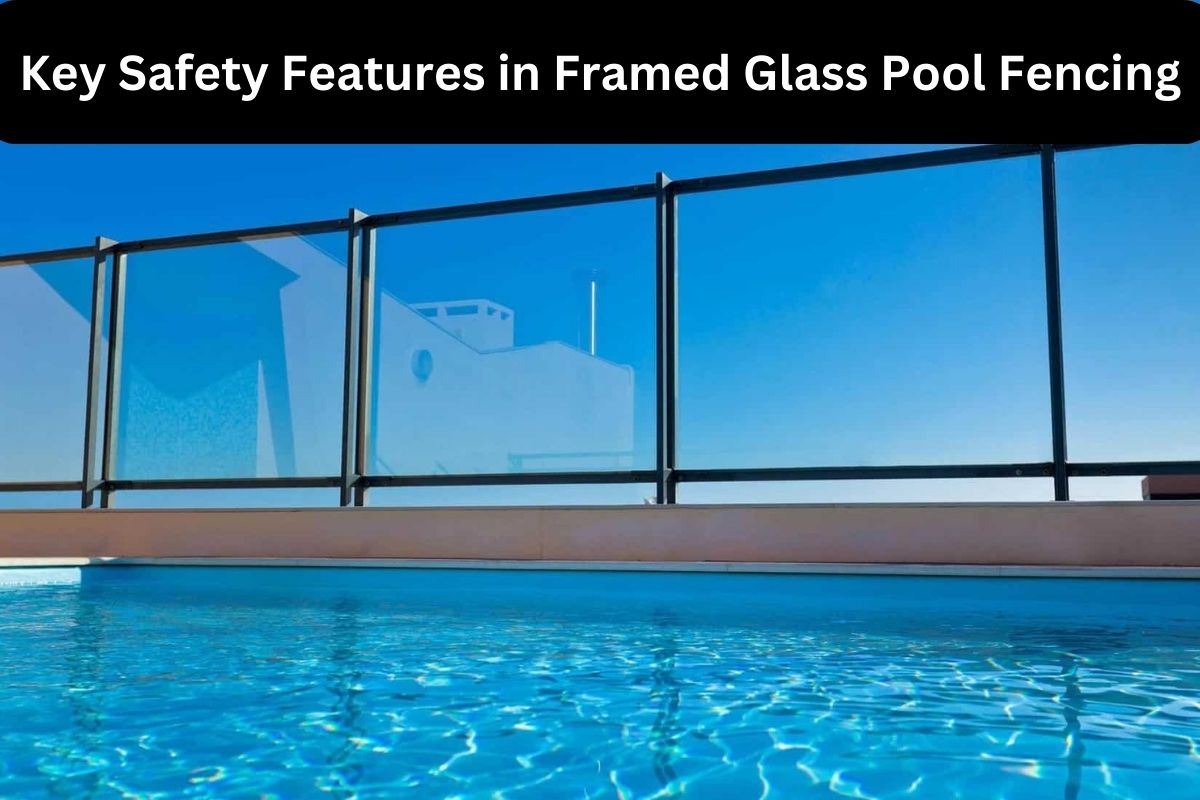
Key Takeaways
- Sturdy frame and construction create a robust barrier for pool safety.
- Self-closing and self-latching gates guarantee the security of the pool area.
- Height and gap requirements prevent unauthorized access.
- Tempered safety glass reduces the risk of injury and breakage.
Sturdy Frame and Construction
The framed glass pool fencing is characterized by its robust frame and construction, ensuring a durable and sturdy barrier around the pool area. This type of pool fencing is made from durable materials such as stainless steel or aluminum frames, which are designed to withstand harsh weather conditions and resist corrosion. The use of these materials enhances the longevity and durability of the fencing, making it a reliable choice for pool safety.
In terms of installation, framed glass pool fencing requires a meticulous process to ensure its stability and effectiveness. It involves securing the frame to the ground using anchor brackets and bolts, ensuring a strong foundation. The glass panels are then carefully installed within the frame, providing a clear and unobstructed view of the pool area. The installation process should be carried out by professionals to ensure proper alignment and secure attachment.
Transitioning to the next section about self-closing and self-latching gates, the sturdy frame and construction of the glass pool fencing also play a crucial role in the functionality of these gates.
Self-Closing and Self-Latching Gates
One important aspect to consider when discussing self-closing and self-latching gates in the context of framed glass pool fencing is their ability to seamlessly snap shut, like a well-oiled machine, ensuring that the gate remains securely closed at all times. This is made possible by the gate hardware and latch mechanism, which play a crucial role in maintaining the safety of the pool area.
- Reliability: The self-closing feature of these gates ensures that they consistently return to a closed position after being opened, minimizing the risk of accidental access to the pool area. This provides peace of mind to pool owners and parents, knowing that the gate will automatically close behind them or their children.
- Convenience: The self-latching mechanism ensures that the gate securely locks in place without the need for manual intervention. This eliminates the possibility of human error, such as forgetting to latch the gate properly, and saves time and effort for pool users.
- Durability: The gate hardware and latch mechanism are designed to withstand harsh weather conditions and regular use. They are typically made from high-quality materials that are resistant to corrosion, ensuring the longevity and reliability of the self-closing and self-latching functionality.
Moving forward to the next section about ‘height and gap requirements’, it is essential to consider these factors in conjunction with the gate hardware and latch mechanism to ensure the overall effectiveness and compliance of framed glass pool fencing.
Height and Gap Requirements
Height and gap requirements play a crucial role in ensuring the effectiveness and compliance of framed glass pool fencing. These requirements are determined by local building codes and regulations and are designed to prevent accidents and ensure the safety of children and pets around the pool area.
The installation process of framed glass pool fencing involves careful measurement and placement of the glass panels to ensure that they meet the specified height requirements. The height of the fence is typically required to be at least 1200mm (47 inches) above ground level to prevent unauthorized access. Additionally, there are specific regulations regarding the gap between the bottom of the fence and the ground, which is typically required to be no more than 100mm (4 inches) to prevent small children from crawling underneath.
Maintenance tips for framed glass pool fencing include regularly inspecting the fence for any signs of damage, such as cracks or chips, and repairing them promptly to maintain the integrity of the fence. It is also important to clean the glass panels regularly to remove any dirt or debris that may obstruct the view or compromise the safety of the fence.
Ensuring that the height and gap requirements of framed glass pool fencing are met is essential for maintaining a safe pool environment. In the next section, we will discuss the importance of a non-climbable design in preventing accidents and enhancing the security of the pool area.
Non-Climbable Design
A design that discourages climbing is a critical component in ensuring the security and well-being of individuals around the pool area.
To prevent children from accessing the pool unsupervised, framed glass pool fencing should be constructed with a non-climbable design. This means that the fence should not have any horizontal bars or footholds that could be used to climb over. Instead, the design should feature vertical bars or panels that are closely spaced together to eliminate any gaps or handholds.
One important feature to consider in a non-climbable design is the childproof latch. This latch should be positioned at a height that is out of reach for young children, ensuring that they cannot open the gate themselves. Additionally, it should be designed in a way that is difficult for children to manipulate, providing an extra layer of security.
In terms of maintenance tips, it is important to regularly inspect the pool fence for any signs of wear or damage. Any loose or broken parts should be repaired or replaced immediately to maintain the fence’s effectiveness. Furthermore, keeping the fence clean and free from debris will help to ensure its longevity and functionality.
A non-climbable design is a key safety feature in framed glass pool fencing. By incorporating features such as a childproof latch and following maintenance tips, the fence can provide secure and effective protection for individuals around the pool area.
Transitioning to the subsequent section about ‘tempered safety glass,’ it is important to also consider the material used in the construction of the fence.
Tempered Safety Glass
Tempered safety glass is an essential component in ensuring the structural integrity and durability of the pool fence. It is a type of glass that is processed through controlled thermal and chemical treatments, resulting in increased strength and resistance to breakage. The use of tempered safety glass in framed glass pool fencing offers several advantages.
- Tempered glass applications:nnTempered safety glass is widely used in pool fencing due to its ability to withstand high impact, making it less prone to breakage. This is particularly important in a pool setting where accidents or impacts can occur. Moreover, tempered glass is designed to break into small, less dangerous pieces when shattered, reducing the risk of injury.
- Maintenance tips:nnTo maintain the safety and appearance of tempered glass pool fencing, regular cleaning is crucial. It is recommended to use a non-abrasive cleaner and a soft cloth or sponge to remove any dirt or grime. Additionally, it is important to inspect the glass panels regularly for any signs of damage or wear. Any chips, cracks, or loose fittings should be addressed promptly to ensure the continued safety and functionality of the pool fence.
Tempered safety glass is a critical component of framed glass pool fencing. Its applications in providing strength and resistance to breakage, along with proper maintenance, contribute to the overall safety and longevity of the pool fence.
A Majestic Upgrade: Superior Framed Glass Pool Fencing
Elevate your pool area with Majestic Glass’s superior framed glass pool fencing services in Sydney. We take pride in transforming pool areas into safe and visually striking spaces, thus bringing a unique blend of style and safety. Utilising high-grade glass, we ensure durability along with aesthetic appeal. Dive into our main services page for a deeper understanding of our unwavering commitment to quality and the unique advantages of a Majestic Glass framed pool fence.
Frequently Asked Questions on Key Safety Features in Framed Glass Pool Fencing
Are there any additional safety measures that can be added to framed glass pool fencing?
Non slip coatings and heightened gate locks are additional safety measures that can be added to framed glass pool fencing. Non slip coatings prevent accidents caused by slippery surfaces, while heightened gate locks enhance security and prevent unauthorized access.
What is the average lifespan of a framed glass pool fence?
The average lifespan of a framed glass pool fence depends on various factors such as the quality of materials used, installation techniques, and adherence to a regular maintenance schedule. Regular maintenance is essential for ensuring the longevity of the fence.
Can framed glass pool fencing be customized to fit unique pool shapes or sizes?
Framed glass pool fencing offers customization options to fit unique pool shapes and sizes. This provides the benefits of enhancing the aesthetic appeal of the pool area while still maintaining safety and security.
How often should the self-closing and self-latching mechanisms on the gates be inspected or maintained?
Regular inspection and maintenance of the self-closing and self-latching mechanisms on pool gate is crucial. Experts recommend inspecting the self latching mechanism to ensure it is functioning properly, and performing regular maintenance on the self closing mechanism to prevent any malfunctions or accidents.
Is framed glass pool fencing suitable for use in areas with extreme weather conditions?
Framed glass pool fencing offers advantages such as providing a clear view, enhancing the aesthetic appeal, and being durable. However, it has disadvantages in extreme weather conditions, including potential damage to the frame and glass panels, and reduced visibility due to dirt and debris accumulation.
Conclusion
In conclusion, framed glass pool fencing offers key safety features that ensure the protection of individuals around the pool area.
The sturdy frame and construction provide stability and durability, while self-closing and self-latching gates ensure that the pool area is always securely enclosed.
Meeting height and gap requirements further enhance safety by preventing access to the pool by young children and pets.
Additionally, the non-climbable design of the fencing eliminates the risk of accidents.
With tempered safety glass, the fencing provides an extra layer of protection against breakage.
Despite concerns about potential costs, investing in these safety features is crucial to preventing accidents and ensuring the well-being of everyone around the pool area.
Related Articles
Installation Process and Safety Concerns of Framed Glass Pool Fencing

